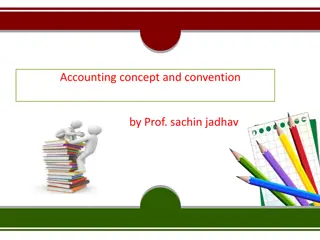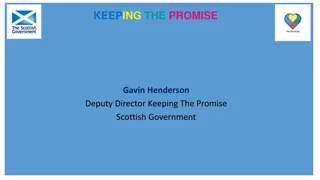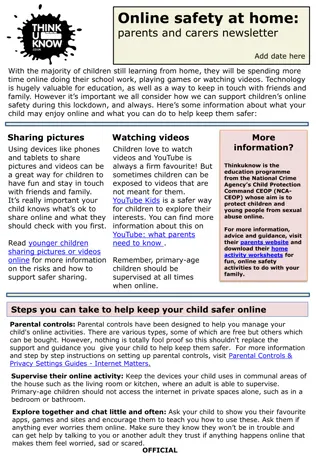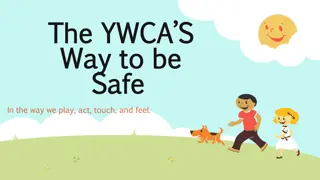Exploring Changes in Keeping Children Safe in Education 2022
The Keeping Children Safe in Education 2022 guidelines have incorporated the DfE sexual violence and sexual harassment guidance, emphasizing inclusion, human rights, equality law, domestic abuse, and governance roles. The focus is on online safety, child-on-child abuse, and staff conduct in reporting concerns. Understanding harm beyond physical effects, such as emotional and psychological impacts, is crucial in safeguarding children.
Download Presentation

Please find below an Image/Link to download the presentation.
The content on the website is provided AS IS for your information and personal use only. It may not be sold, licensed, or shared on other websites without obtaining consent from the author. Download presentation by click this link. If you encounter any issues during the download, it is possible that the publisher has removed the file from their server.
E N D
Presentation Transcript
Keeping Children Safe in Education 2022 Exploring the changes 14thJune 2022
Introduction to Safeguarding Network Build confidence in safeguarding Supporting DSLs in settings/organisations develop effective safeguarding Delivering reliable services Low cost, affordable membership to help raise safeguarding culture, meet statutory requirements and deliver best practice Membership discount code: KCSIE22 www.safeguarding.network contact@safeguarding.network Tel: 01803 862 336
OverviewKeeping Children Safe in Education 2022 The DfE sexual violence and sexual harassment guidance has been incorporated into KCSiE 2022 Greater emphasis on inclusion, Human Rights and Equality Law Greater emphasis on domestic abuse, children s experience and longer term impact term child-on-child abuse replaces peer-on-peer abuse throughout document Focus on role of Governors for supporting DSL and training to equip for strategic role Online safety reviewing monitoring and filtering systems and working with parents
Introduction section: About this guidance new definition of terms victims and perpetrators added Separate guidance - Sexual Violence and Sexual Harassment between children in schools and colleges is no longer referenced
Part One: Safeguarding Information for ALL Staff
Part One: Safeguarding Information for ALL staff Child on Child abuse has replaced the term peer on peer abuse. Children may not be ready or able to disclose abuse Staff Code of Conduct and reporting low level concerns Alignment of definition of abuse with Working Together to Safeguard Children 2018
Harm can include ill treatment that is not physical as well as the impact of witnessing ill treatment of others. This can be particularly relevant, for example, in relation to the impact on children of all forms of domestic abuse.
Part One: Safeguarding Information for ALL staff Additional sentence on recording concerns Staff training to continue to provide them with relevant skills and knowledge to safeguard children effectively. Emphasis on domestic abuse
Part Two: The Management of Safeguarding
Part Two: The Management of Safeguarding Governor safeguarding training Governors should receive safeguarding training at point of induction. Information sharing Safeguarding information and child protection files should be shared within a timeframe of 5 school days Emphasis on reminding school leaders and governors of the importance of Human Rights and Equality legislation. Inclusion and LGBTQ+ children
Part Two continued Online safety role of governors in ensuring online safety is a running and interrelated theme Preventative education how schools deliver a safeguarding curriculum Role of the Virtual Head for Looked After and Previously Looked After Children Safeguarding and SEND
Part Three: Safer Recruitment
Part Three: Safer Recruitment Clarifies that CV s are not acceptable on own without full application form Online searches for shortlisted candidates as part of due diligence in recruitment process.
Part Four: Managing Allegations
Part Four Changes in wording around suspension of staff in investigations Clarification that all allegations against staff investigations should be considered to determine if any lessons can be learned as well as improvements made Clarity on low-level concerns: - text change to humiliating pupils - how and who low level concerns are reported to and this being clear in policy
Part Five: Child on Child Sexual Violence and Harassment
Part Five Child on Child Sexual Violence and Sexual Harassment Importance of whole school approach Quality staff training Explaining law to children there to protect not criminalise Intra-familial harm Settings to be part of discussions with safeguarding partners
The Annexes A: Updated to reflect Part 1 changes B: Serious violence indicators C: General detail moved from Part 2, now incorporates former Annex D D: Information around online safety now merged with other annexes E: Previously annex F. No change
Next steps Action planning and implementing
Action plan: Policy updates Safeguarding Policy Staff Code of Conduct Online Safety Transition procedure DSL job description
Action plan: Governance Arrange Safeguarding training for ALL governors Agree schedule of support/learning walks Ensure Annex C is read by Governors and Leadership
Action plan Whole School Approach Review preventative education curriculum Staff knowledge and training Accessible policies Multi-agency working Child on child abuse
Action plan Online Safety Governance Review filtering and monitoring systems Communication with parents
for more information visit https://safeguarding.network/ Tel: 01803 862336 contact@safeguarding.network thank you























